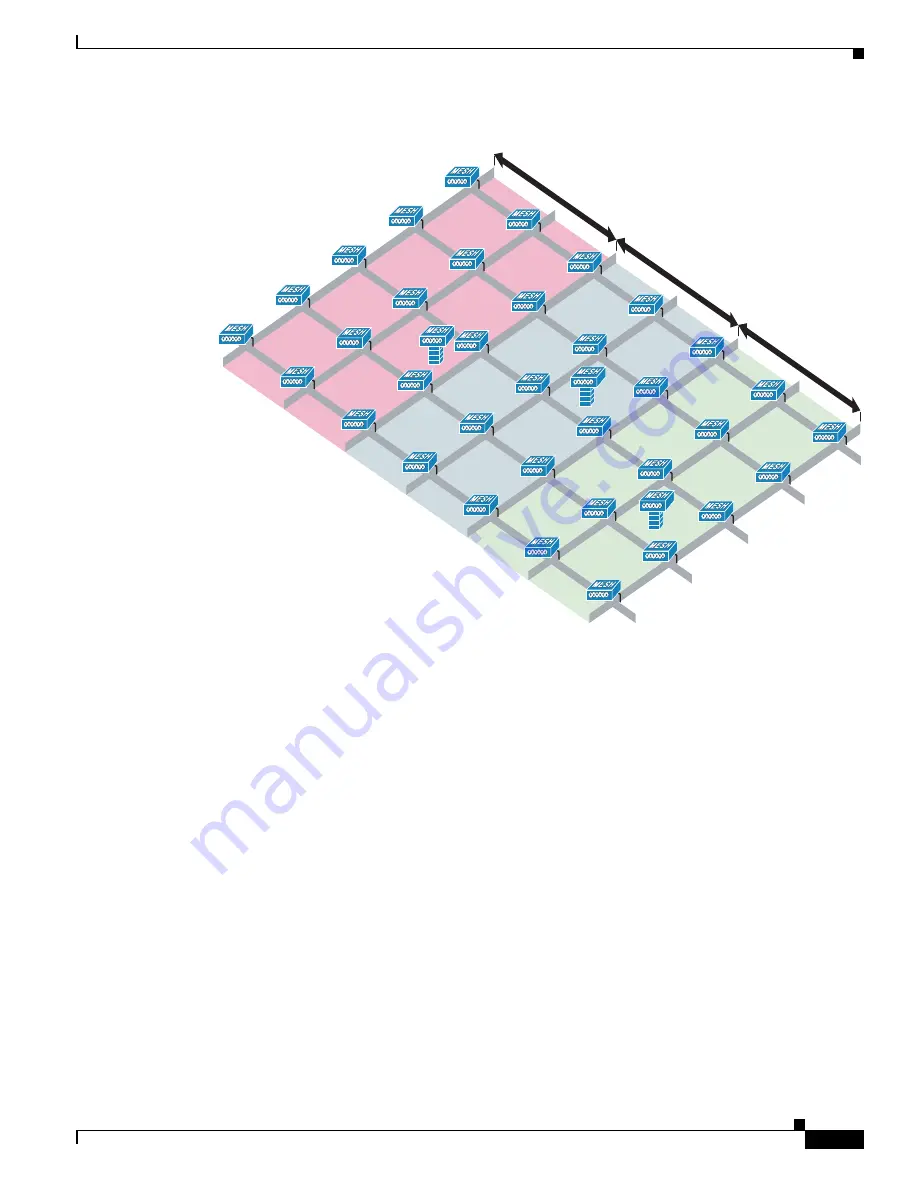
47
Cisco Aironet 1520, 1130, 1240 Series Wireless Mesh Access Points, Design and Deployment Guide, Release 6.0
OL-20213-01
Site Preparation and Planning
Figure 30
Multiple RAP and MAP Cells
Choosing various channels reduces the co-channel interference at the cell boundaries, at the expense of
faster mesh convergence, because MAPs must fall back to seek mode to find neighbors in adjacent cells.
In areas of high traffic density, co-channel interference has the highest impact, and this is likely to be
around the RAPs. If RAPs are clustered in one location, a different channel strategy is likely to give
optimal performance; if RAPs are dispersed among the cells, using the same channel is less likely to
degrade performance.
When laying out multiple cells, use channel planning similar to standard WLAN planning to avoid
overlapping channels, as shown in
Channel B2
Channel C2
Channel D2
148469
















































